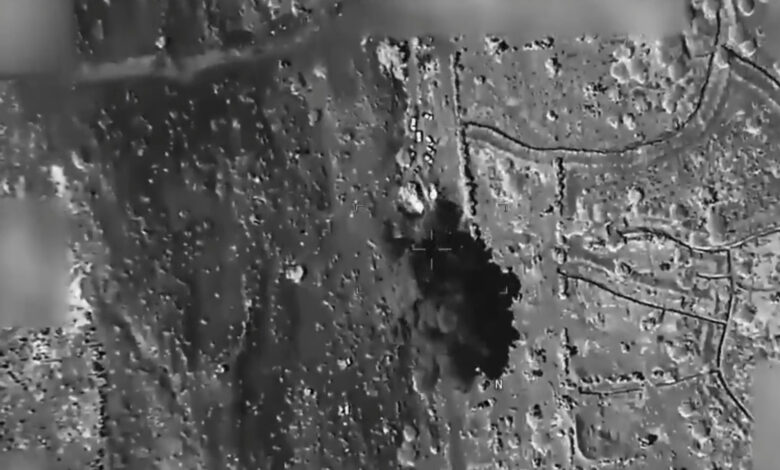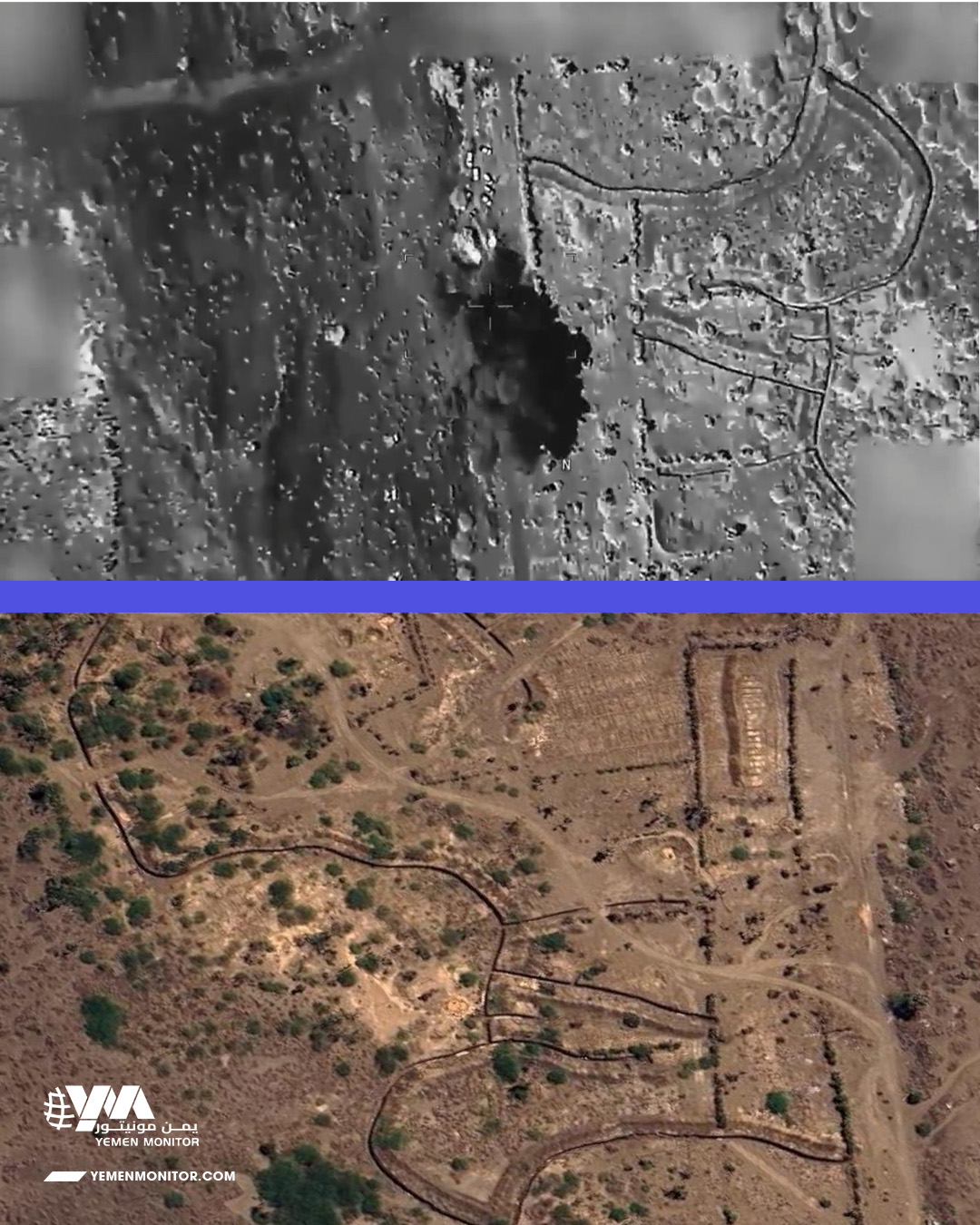
Yemen Monitor / Sana’a / Exclusive:
A video clip posted by U.S. President Donald Trump forced the Houthi group to admit to the killing and wounding of dozens of its fighters in western Yemen. This confirms earlier reports that the group has been concealing human losses since the start of new U.S. airstrikes in mid-March.
Just hours before Trump published the video—which shows an airstrike that killed a gathering of Houthi fighters—the group’s leader claimed that the U.S. military had failed to kill any of the armed movement’s senior figures. Meanwhile, U.S. officials confirmed the deaths of senior leaders in the group, although the Houthis had only acknowledged the death of a missile expert in the first wave of strikes.
According to sources speaking to Yemen Monitor and announcements from the fighters’ families, there were dozens of Houthi fatalities. However, it appears the airstrikes targeted the mid- and lower-level leadership of the armed Yemeni movement.
The US did not specify the location shown in the video Trump posted on his favorite platform “Truth,” but it appears to show a strike targeting a gathering in the Al-Jabaliya area near “Al-Faza” in Al-Tuhayta District, western Yemen. This area lies on the frontlines of fighting against the UAE-backed Joint Forces led by Brigadier General Tareq Saleh.

According to the monitoring unit of Yemen Monitor, the Al-Tuhayta District was hit by six airstrikes at dawn on March 21, 2025. At that time, the Houthis did not report any casualties. Nor did the group’s media—or Yemen Monitor sources—mention any additional airstrikes in the district between March and April 5. This refutes the Houthis’ claim that the strike hit a social gathering or “Eid visit,” as the attack occurred eight days before the Eid al-Fitr holiday and clearly targeted a military objective.
Two residents of Al-Tuhayta told Yemen Monitor on Saturday that they heard the airstrikes early that morning (Friday) but were unaware of any deaths or injuries in their immediate areas.
Yemen Monitor showed sources the location of the strike on a map, and they confirmed it as a military zone controlled by the Houthis.

The video shows at least 74 individuals standing in an oval formation, with one person in the center apparently addressing the group. This is a common gathering style among Yemeni tribes and Houthi fighters during frontline visits by group officials.

It appears that the Houthis did not inform some of the families of the dead or wounded until after Eid al-Fitr. Fighters are typically with their families for the holiday or, at minimum, stay in contact with them. Since March 21, the Houthis have buried dozens of their leaders and fighters without mentioning their roles, positions, or where they were killed.
On April 4, relatives reported the death of Colonel Mohammed Shawqi Jiyash, a Houthi loyalist from Amran Province (south of Sana’a), who served as the supervisor of police stations in Hodeidah, along with his brothers Hani and Ayman. It remains unclear whether their deaths are linked to the airstrike in Trump’s video. The Houthis’ media made no mention of their deaths.
That same day, Houthi media reported the funeral in Al-Tuhayta District of “Mohammed Hassan Hassan Qattab,” saying he was killed while “fulfilling his duty on the frontlines defending the nation”—without providing further details.
It is unclear why the Houthis are concealing their casualties. Loyalists on social media have said that hiding such losses is a “crime,” as many families are left waiting for their loved ones, unaware of their fate. This secrecy, they argue, erodes family loyalty to the movement.
It seems the Houthis fear the impact such losses could have on the group’s recruitment and presence on the frontlines in its fight against the internationally recognized government and its allies. Over the course of the war, the group has lost many of its ideologically committed fighters, with most current fighters being new recruits enlisted during recent years of conflict.




